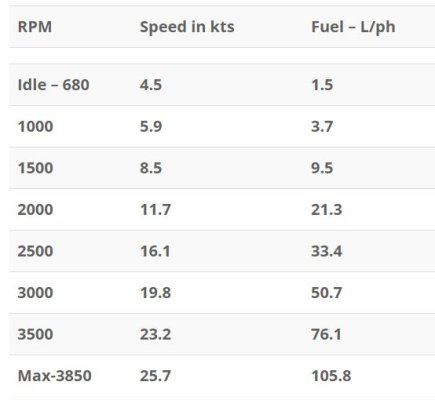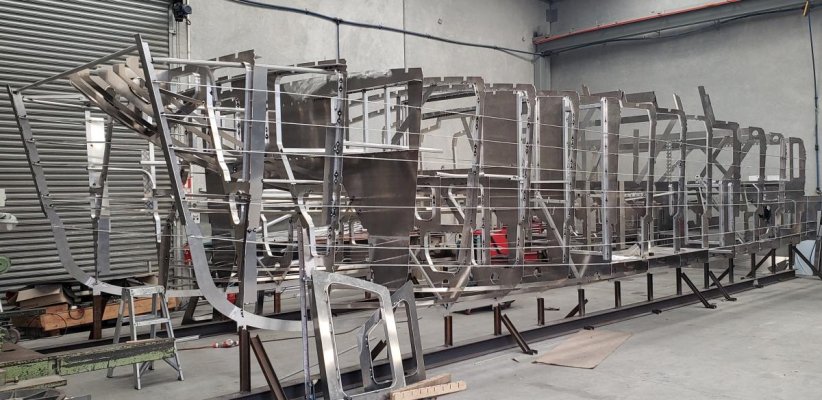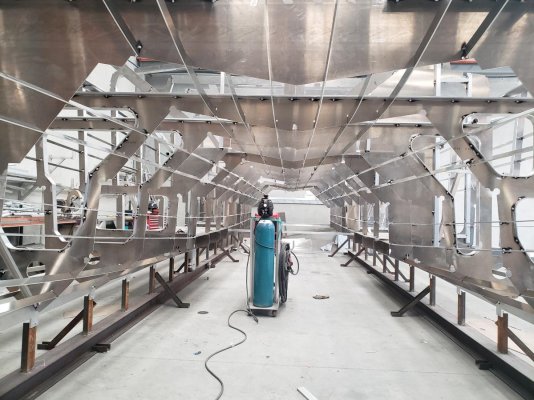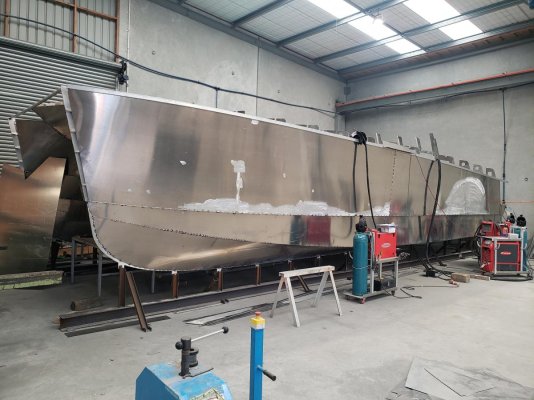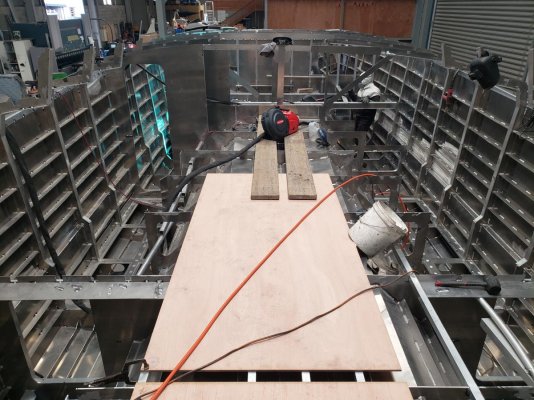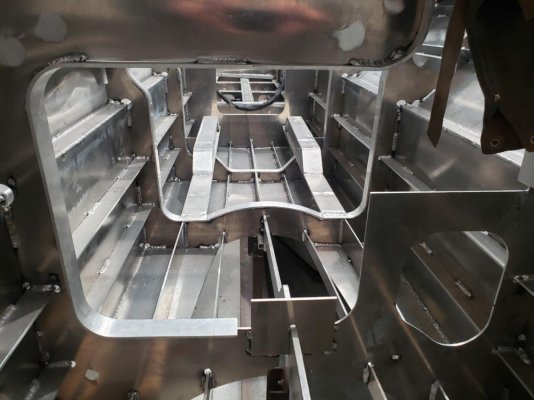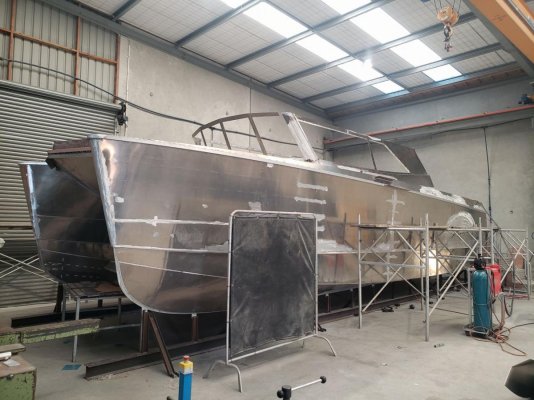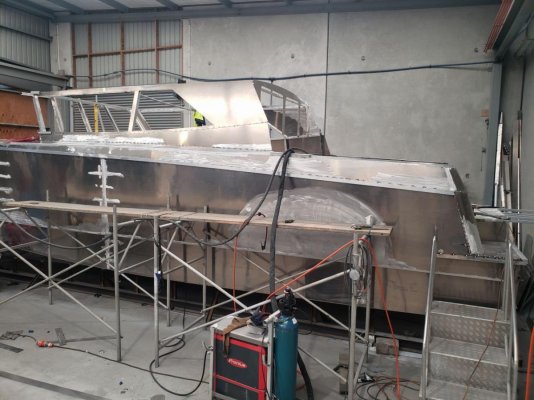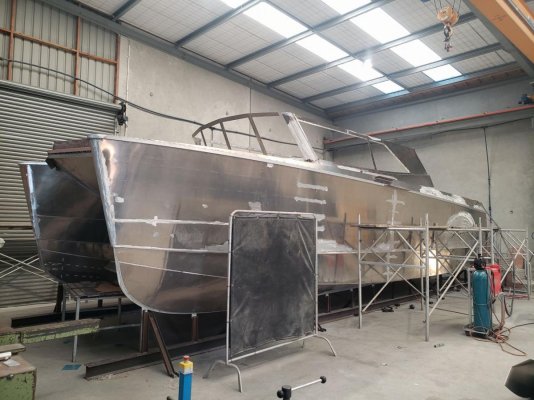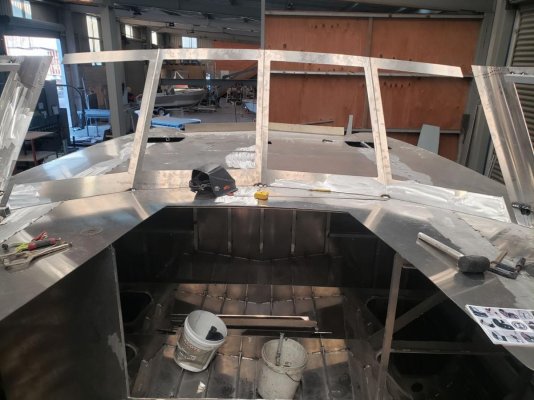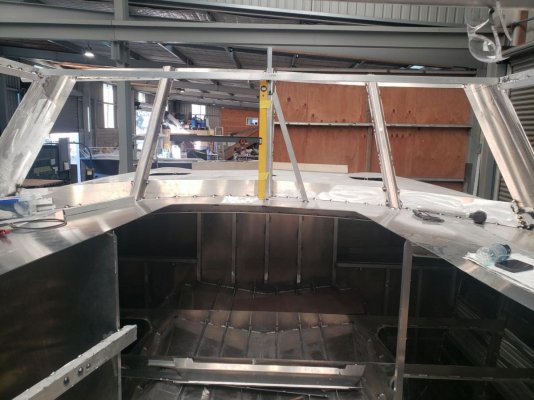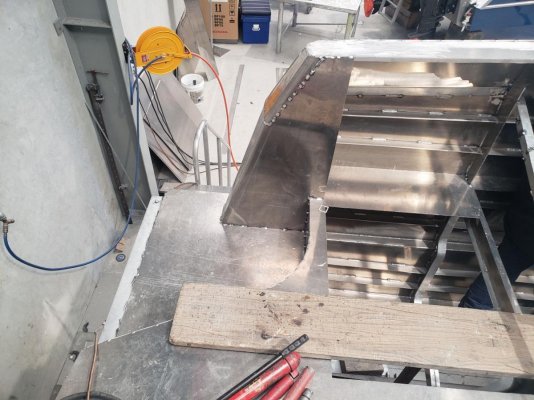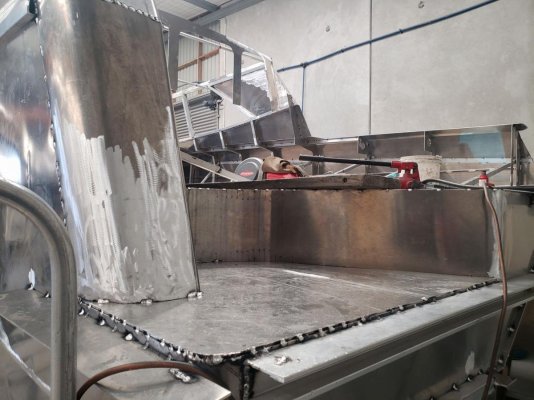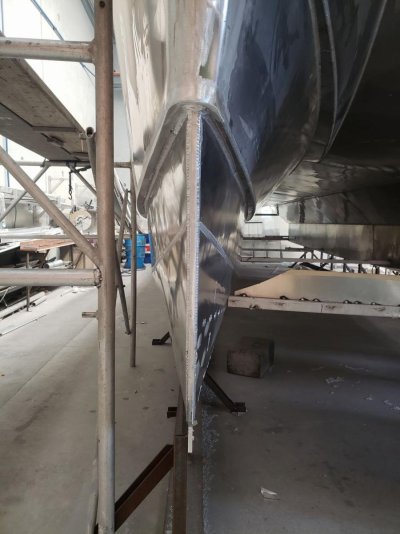darkside
Senior Member
- Joined
- Apr 4, 2016
- Messages
- 400
- Location
- New Zealand
- Vessel Name
- Ahi
- Vessel Make
- Roger Hill Powercat
The concept:
A robust coastal cruiser, comfortable for a week at a time, and longer on occasional expeditions.
The boat is also my apartment when I work in Auckland.
Because of that I head out to the Hauraki Gulf islands to overnight solo, one or two nights a week.
We wanted:
1. Easy to handle solo, even in the 20 to 30kn winds we often get down here
2. Had to fit in our well located 12m marina berth
3. Good cockpit space for fishing and diving
4. Good fuel efficiency, particularly at higher speeds
5. Walk around master and good size guest berth
6. Separated shower and heads
7. Twin helm seats
8. Reverse sheer windscreens to keep the sun out of the boat
9. Good cockpit seating
10. Ability to sit on the beach
We are catamaran fans having circumnavigated a Grainger 46 a few years back.
Since then we have had two Roger Hill planning alloy powercats.
This time we wanted to try displacement for softer ride and better efficiency and range.
We tweaked the accommodation layout on one of Roger’s proven hulls and asked him to develop a GA.
We then engaged Alloycats to do the build.
Alloycats had built our last two powercats (we bought those two used) and are 2 miles from our house.
The main problems for powercats are:
a. you have to be careful with weight
b. engine access is usually bad
Roger added 50mm more draft for our build to cope with the 1000l fuel and 400l water we wanted.
We also went with twin heads and showers.
It’s nice for guests to have separate facilities but mostly it allows an access door in the rear wall of the shower.
That allows easy access to the front of the engine where service items like the alternators and raw water pumps are.
The rest you get to from a deck hatch.
The renders aren’t quite where we ended up but we started with this.
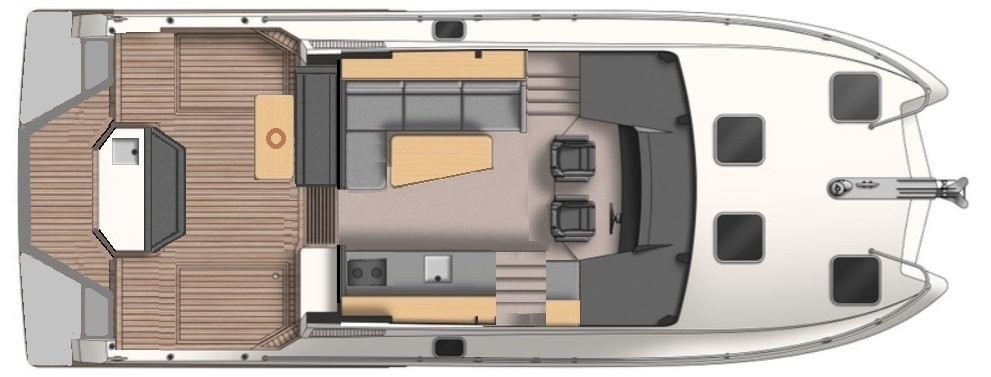
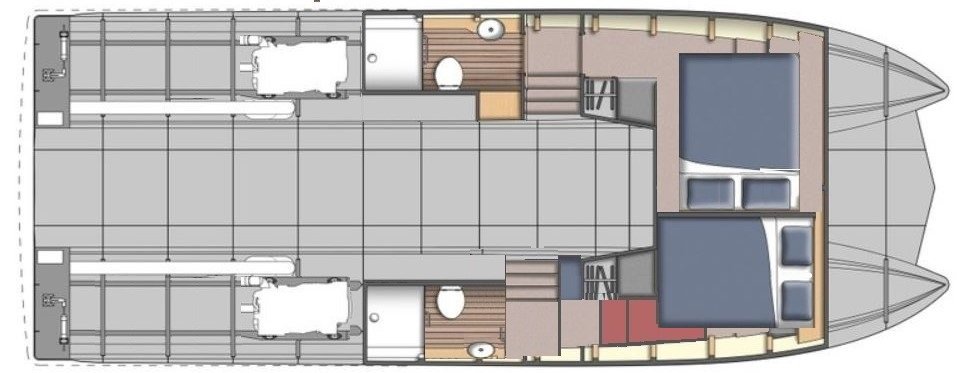
A robust coastal cruiser, comfortable for a week at a time, and longer on occasional expeditions.
The boat is also my apartment when I work in Auckland.
Because of that I head out to the Hauraki Gulf islands to overnight solo, one or two nights a week.
We wanted:
1. Easy to handle solo, even in the 20 to 30kn winds we often get down here
2. Had to fit in our well located 12m marina berth
3. Good cockpit space for fishing and diving
4. Good fuel efficiency, particularly at higher speeds
5. Walk around master and good size guest berth
6. Separated shower and heads
7. Twin helm seats
8. Reverse sheer windscreens to keep the sun out of the boat
9. Good cockpit seating
10. Ability to sit on the beach
We are catamaran fans having circumnavigated a Grainger 46 a few years back.
Since then we have had two Roger Hill planning alloy powercats.
This time we wanted to try displacement for softer ride and better efficiency and range.
We tweaked the accommodation layout on one of Roger’s proven hulls and asked him to develop a GA.
We then engaged Alloycats to do the build.
Alloycats had built our last two powercats (we bought those two used) and are 2 miles from our house.
The main problems for powercats are:
a. you have to be careful with weight
b. engine access is usually bad
Roger added 50mm more draft for our build to cope with the 1000l fuel and 400l water we wanted.
We also went with twin heads and showers.
It’s nice for guests to have separate facilities but mostly it allows an access door in the rear wall of the shower.
That allows easy access to the front of the engine where service items like the alternators and raw water pumps are.
The rest you get to from a deck hatch.
The renders aren’t quite where we ended up but we started with this.



